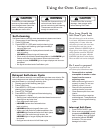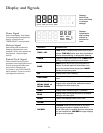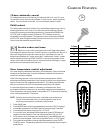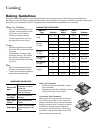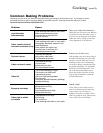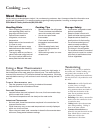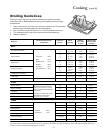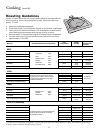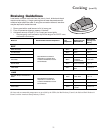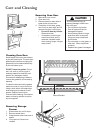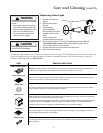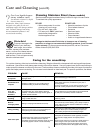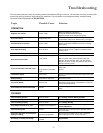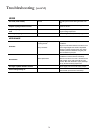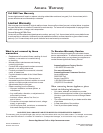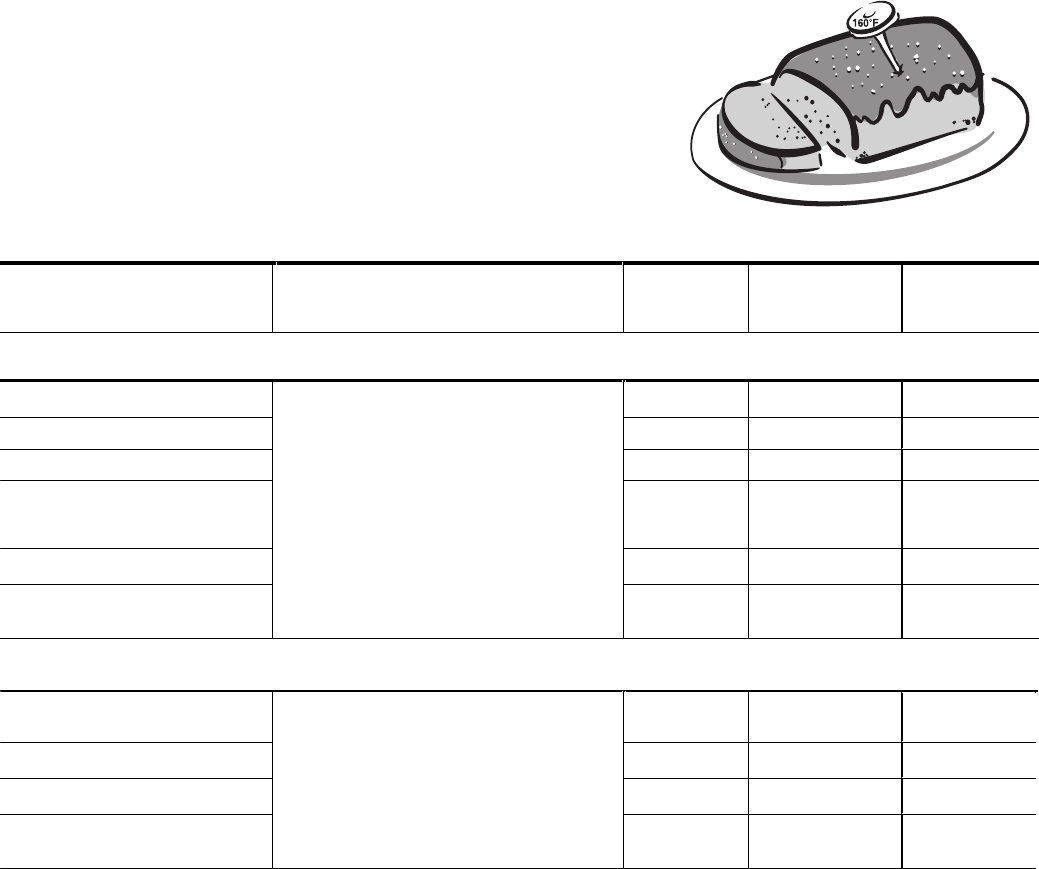
21
Braising Guidelines
Less tender cuts such as those from the round, chuck, brisket and shank
require moist cooking. A longer cooking time at lower temperatures with
moisture helps soften the meat. If using the convection element, less time
may be required to braise the meat.
1. Brown meat with a small amount of oil in heavy pan.
2. Pour off excessive drippings, season, if desired.
3. Add small amount of liquid (1/2 to 2 cups) and cover tightly.
Simmer gently over low heat on top of the range or in a 325°F oven,
until meat is fork tender.
Meat Cut Recommended Internal Temperature
Oven
Temperature
Weight (pounds)
OR Thickness
Approximate
Cooking Time
(hours)
BEEF
Blade Pot Roast 325°F 3 to 5
1
½ to 2
Arm Pot Roast 325°F 3 to 5 2 to 3
Chuck Roast (boneless) 325°F 3 to 5 2 to 3
Short Ribs 325°F
2 inches
x 2 inches
x 4 inches thick
1 ½ to 2
½
Round Steak 325°F
¾ to 1 inch thick 1 to 1 ½
Flank Steak
Meat should be cooked to a
temperature of at least 160°F
to reduce the likelihood of food-
borne illnesses.
325°F
1
½ to 2 inches
thick
1
½ to 2 ½
LAMB
Shoulder Chops, Round Bone or
Blade
325°F 1 inch thick
1 to 1
¼
Riblets 325°F 3 pounds
1
½ to 2
Shanks 325°F 3 pounds
1 to 1
½
Stew Cubes
Meat should be cooked to a
temperature of at least 160°F
to reduce the likelihood of food-
borne illnesses.
325°F
1 inch pieces
1
¼ lbs.
1
¼ to 1 ½
All times and recommended temperatures are provided by the USDA, the Beef Industry Council, the National Pork Producer’s
Council, and the American Sheep Industry Council.
Cooking (cont'd)



